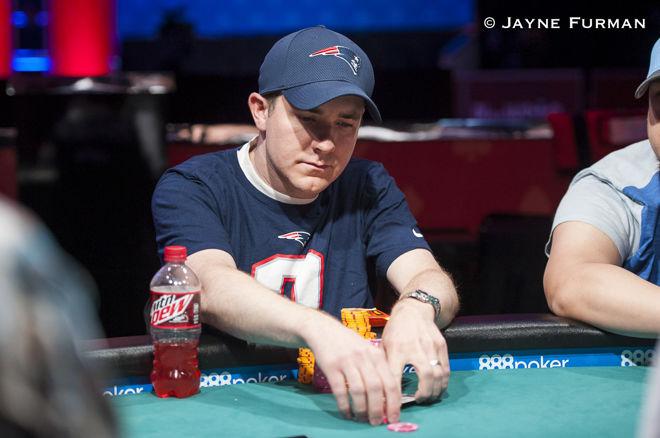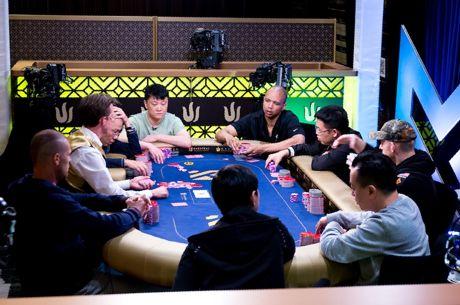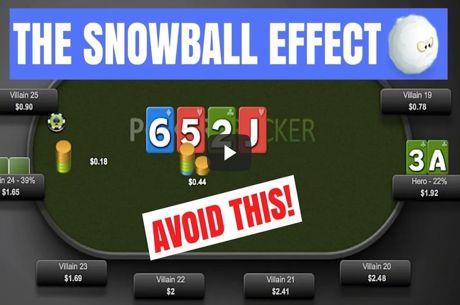PokerNews Op-Ed: World Series of Poker Staking Considerations

The only thing better than playing in a poker tournament is having a piece of someone in a poker tournament. You get all of the sweat with none of the work! But there's a lot to consider before buying a piece of a player �� the "horse" �� including how you're paying for it and what exactly you're paying for.
There are two ways to buy pieces of tournaments: the standard way, and the good way.
There are two ways to buy pieces of tournaments: the standard way, and the good way.
The standard way is markup: an upfront charge of a negotiated percentage that's typically based on the perceived skill of the player, expected toughness of the tournament field, and, often, how badly the horse needs the money (or doesn't). Its one advantage is that it is simple.
The good way is profit share: the horse receives no upfront payment, and the backer invests at face value. At the end of the stake, if there have been cashes but no profit, everybody gets the cash back proportionate to their investment. If there is profit, the backers' money is returned in full, and then the horse gets an extra share of the profits above their investment.
For example, if a backer and horse each put up 50 percent of the cash for a $100,000 package, they could split the profit 65 percent to the backer and 35 percent to the horse. If the horse only cashes for $80,000, both get $40,000 back. If the horse cashes for $200,000, then both get $50,000 back, and then the horse also gets 35 percent of the backer's profit. So the horse would end up with $117,500, and the backer with $82,500.
Markup versus Profit Share
While markup is a necessary evil for a single tournament, it is somewhat distasteful when applied to an entire summer at the WSOP. Someone selling a $200,000 package at a 20 percent markup �� a very common occurrence �� is essentially getting paid $40,000 to play poker for several weeks regardless of what happens. Markup creates poor incentives for the horse, as they are rewarded with markup for playing as many tournaments as possible with no regard to performance.
Markup, as a concept, ultimately feels odd on a basic level. The backer and horse go into a tournament series expecting to be profitable. Why should the horse get paid a large sum before any of these profits materialize?
Profit split packages solve these problems by motivating the horse to maximize the only thing that matters: profits. The only way the horse gets value from the backer is to have a profitable package, and if not, the backer isn't out any extra money. A horse won't be tempted to add a marginal tournament to their schedule, and they'll probably be putting up a decent amount of their own money without a markup payment to fund their investment. Skin in the game!
Markup Considerations
The main premise behind markup is that a horse's expected ROI is X percent, so markup should be some fraction of X percent. But nobody knows what anybody's true ROI is anyway, so other factors generally become more important. As a result, markup is just a way to be precisely wrong instead of approximately right.
If you're considering buying a piece of someone, the player probably falls into one of three categories: a friend, a grinder, or a name pro. Your consideration will be different for each.
Markup creates poor incentives for the horse, as they are rewarded with markup for playing as many tournaments as possible with no regard to performance.
Maybe one of your friends is taking a shot at the WSOP over a couple events or wants to play a few tournaments at a local series stop. Most likely, they want to play a few smaller events but not have 100 percent of themselves in the local main event. The horse may or may not be +EV (and it could be awkward to say no), and you are primarily buying the sweat with your horse.
You basically shouldn't be paying any markup in cases like these, and particularly if the horse wouldn't be playing the tournament if they didn't sell a piece. Is it reasonable to pay a little bit of markup for a decent recreational player in a World Series of Poker Circuit Main Event? Probably, but it's certainly not necessary.
A grinder is a completely different story. You are paying for the right to take a piece of someone with an established track record as a profitable player. Many players will sell large packages for the World Series of Poker as I mentioned above. If you consider investing in these, you should make sure the package is structured appropriately, and, to the extent you can, determine if it seems like good value.
It's not easy, but comparing packages to each other and looking at the horse's results are excellent starting points.
It's not easy, but comparing packages to each other and looking at the horse's results are excellent starting points. I saw one grinder this summer selling at face value; I asked their lifetime ROI, and they said 12 percent. Fair enough! Another grinder listed his lifetime ROI as 30 percent, but his markup was, wait for it�� 30 percent. You might want to pass on that one.
As far as structure, profit splits are of course preferable to markup, and you should generally prefer horses taking significant portions of their own action. A more subtle point is that you should strongly prefer horses who put their entire schedule up for sale.
The grinder shouldn't need to sell for a $1,500 tournament, but they should include those in their package instead of only selling $10Ks. If they want you to invest with them for the summer, then you should get to invest with them for the whole summer and not just the tougher, more expensive tournaments.
Unique Situations
Name pros will rarely sell action publicly, but when they do, it is typically for super high rollers with buy-ins of $250,000 or more. These are a unique and fun investment, and they can be a nice deal at little-to-no markup given the large amount of money that needs to be raised.
About 5 percent markup is common, though it will depend heavily on the tournament's rake. But think about your purchase carefully. I know of one name pro who privately justified his markup with reasoning similar to "I think 5 percent markup is fair, but because I'm [name pro], I can charge 10 percent and am going to."
Profit splits are of course preferable to markup, and you should generally prefer horses taking significant portions of their own action.
The best situation for you to be in is when you are able to structure the package yourself. This means you're probably going to have to front or aggregate almost all of the money, but then you can negotiate something fair and maybe unique. I once led a group that put a WSOP-C grinder in the Main Event with about 24 hours' notice.
After a disappointing summer and busting all the satellites, the horse couldn't put up any of his own cash. Not an ideal scenario, but one we could work with. His percentage was very low for min-cashes under $100,000, but in the event of a big score, he was rewarded with a higher share.
But the horse did need to stick around the WSOP for several more days, so in return for the very low markup on min-cashes, he received a cash bonus for every day he lasted. Everyone was happy: the package sold out quickly, the backers got a nice price on a good player in the Main Event, and the horse got a complete life freeroll for an extra week in Vegas.
The primary objective of buying and selling pieces is that the market clears and everyone is happy. If you value the sweat more than the expected profits, by all means, pay a little more. If enough people pass up on a lot of packages that don't seem to be a good value, horses may end up needing to charge less or restructure. Or maybe someone will find a way to bet against them. Just make sure you know what you're paying for and why.
This PokerNews Op-Ed is written by Eric Rodawig. Rodawig has $829,703 in lifetime earnings. His biggest cash came in 2011 when he won the $10,000 Seven Card Stud Hi/Lo event at the World Series of Poker for $442,183, beating Phil Hellmuth heads up. Last year, Rodawig finished runner-up to David Bach in the $10,000 H.O.R.S.E. for $236,841.



